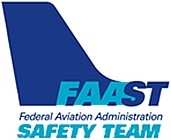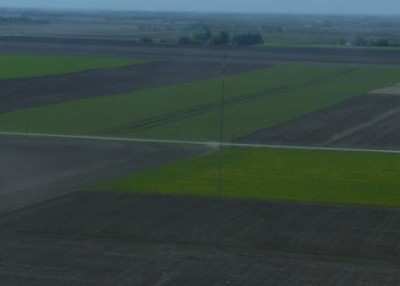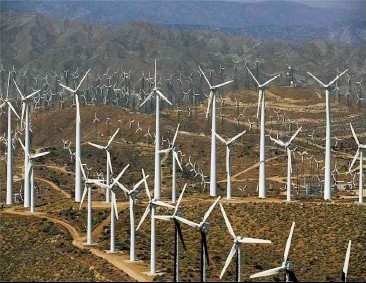Thu, May 13, 2010
Often Uncharted, Difficult To See
 The FAA Safety Team (FAAST) has published an advisory about the
hazards of MET (Meteorological) Towers that are often erected
quickly and can be in place for months or years. The towers are put
up to help gather meteorological information before the
construction of a wind farm or other alternative energy
project.
The FAA Safety Team (FAAST) has published an advisory about the
hazards of MET (Meteorological) Towers that are often erected
quickly and can be in place for months or years. The towers are put
up to help gather meteorological information before the
construction of a wind farm or other alternative energy
project.
Towers generally range in height from 30, 50, 60 and 80 meters
tall. Any tower less than 200 feet in height is not required by
regulation to be lighted. At this time there is no standardized
notification system in place to indicate when and where these
towers are erected.
These are not posted in any Airport Facility Directory, NOTAMS,
etc. unless they interfere with airport operations.

MET Tower FAA Photo
According to the FAA, a sponsor proposing any type of
construction or alteration of a structure that may affect the
National Airspace System (NAS) is required, under the provisions of
Title 14 Code of Federal Regulations (14 CFR part 77, Objects
Affecting Navigable Airspace), to notify the FAA by completing the
Notice of Proposed Construction or Alteration form.
Generally, any structure that exceeds an overall height of 200
feet above ground level (AGL) or exceeds any obstruction standard
contained in 14 CFR part 77 should be marked and/or lighted.
Because of the lighting requirement, most METs are just under 200
feet AGL. However, even if the tower is under 200 feet AGL, or
meets 14 CFR part 77 standards, the FAA may still recommend marking
and/or lighting because of its particular location.

Wind Farm Dept. of Interior Photo
The wind turbines that follow the MET towers can also be
difficult to see. An inter-agency memo issued by the Department of
the Interior and the Forest Service on low-level flight operations
says that wind turbine generators are usually painted white because
it’s the most effective daytime early warning device. Other
colors, such as light gray or blue, appear to be significantly less
effective in providing daytime warning. Daytime lighting of wind
turbines, regardless of height, is not required, as long as the
structures are painted in a bright white color or light off-white
color.
More News
He Attempted To Restart The Engine Three Times. On The Third Restart Attempt, He Noticed That Flames Were Coming Out From The Right Wing Near The Fuel Cap Analysis: The pilot repor>[...]
Make Sure You NEVER Miss A New Story From Aero-News Network Do you ever feel like you never see posts from a certain person or page on Facebook or Instagram? Here’s how you c>[...]
From 2009 (YouTube Edition): Leading Air Show Performers Give Their Best Advice for Newcomers On December 6th through December 9th, the Paris Las Vegas Hotel hosted over 1,500 air >[...]
Aero Linx: NASA ASRS ASRS captures confidential reports, analyzes the resulting aviation safety data, and disseminates vital information to the aviation community. The ASRS is an i>[...]
“For our inaugural Pylon Racing Seminar in Roswell, we were thrilled to certify 60 pilots across our six closed-course pylon race classes. Not only did this year’s PRS >[...]
 NTSB Final Report: Rutan Long-EZ
NTSB Final Report: Rutan Long-EZ ANN FAQ: Turn On Post Notifications
ANN FAQ: Turn On Post Notifications Classic Aero-TV: ICAS Perspectives - Advice for New Air Show Performers
Classic Aero-TV: ICAS Perspectives - Advice for New Air Show Performers ANN's Daily Aero-Linx (06.28.25)
ANN's Daily Aero-Linx (06.28.25) Aero-News: Quote of the Day (06.28.25)
Aero-News: Quote of the Day (06.28.25)





